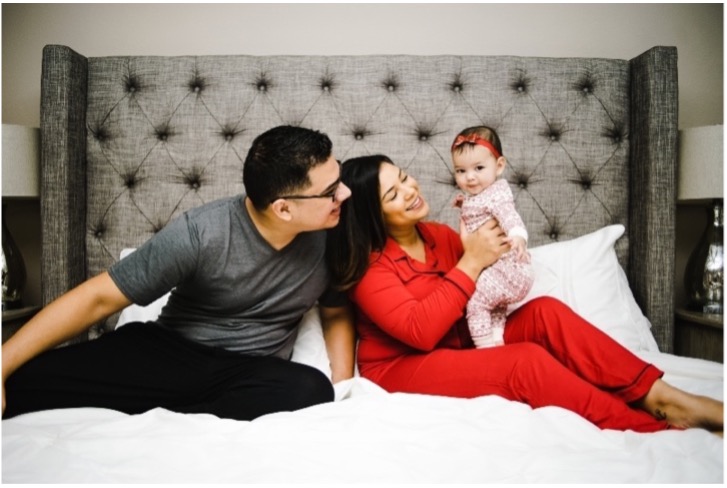From 2023-2024, Camber supported the WA Fatherhood Council in its development of the WA Fatherhood Study. The Council is a collaborative of WA state agency providers, community partners, funders, advocacy, academics, and most importantly fathers with lived experiences. Camber and the Council conduct a nine-month “WA Fatherhood: State of the State” study that includes a landscape of current policies, funding, programs and experiences of fathers and fatherhood figures in Washington state, with a focus on identifying gaps and needs to inform strategic planning and policy recommendations.
Many people assume that because fathers are men/male- presenting adults, they do not face systemic or structural barriers and challenges that require equity considerations. The opposite is true. Our society has systemically created barriers and challenges that often ignore the needs of fathers and undervalue the importance of fatherhood. It was important to involve fathers and those with lived experiences every step of the way because many times “we didn’t know what we didn’t know.”
The vast majority of state agency leaders, staff, and providers, especially those working in early childhood and family supports, were women. Similarly, women also represented the front-line service providers in health care (social workers/community health worker, pre-/post-natal, pregnancy providers etc.), childcare, and social services.
In order to understand how fathers access services, move through the systems, and how they perceive bias and exclusion, we had to be open to listening to their stories. The WA Fatherhood Study covered a breadth of topical areas including Basic Needs (e.g., food, housing, financial support), Health (physical, mental, behavioral), Education, Employment, Family Supports, Safety, Legal, and Justice systems. Camber focused on the state and local systems, and in partnership with a University of Washington team focused on the experiences of dads by conducting a statewide “Dads Survey” and conducting a series of listening sessions with providers and lived experience individuals. We learned that oftentimes there are important intersections between race/ethnicity, income level, justice involvement/history, and relationship/custody status, and other factors that impact how fathers experience exclusion and limited access to services.
Our belief, using a Targeted Universalism framework, is that all fathers should have an equal opportunity to be a positive and supportive presence to their children and co-parents. With that goal in mind, there are fatherhood segments that experience disproportionately more barriers and challenges, access fewer services and resources, and experience worse outcomes. What proved challenging was the data collection and analysis approach in the Study. In order to understand the fatherhood experience, we needed disaggregated data by gender and parental status. Most programs report the gender split, and also whether a household unit is a family with children. However, few programs capture at the individual level whether an adult receiving services is a mother or father. Agency partners and program leads discovered the importance of asking adults whether they have (minor) children in their household, and/or if they have shared custody of a (minor) child. By understanding how fathers are currently receiving services or not receiving services as compared to the general population, we can see whether there are systemic or structural barriers.
In many of the family support programs (e.g., home visiting, food & cash assistance, and early learning programs), it is mostly mothers accessing services on behalf of the family or enrolling the child. In traditional family unit, the father would receive benefits as a part of the household. However, non-traditional families (e.g., shared custody, non-cohabitating) are often not equally supported, and it’s usually the father who receives fewer benefits. The systems involved in serving families have not fully grasped the variation and nuances of non-traditional families, and how to support them in an equitable way that doesn’t pit father against mothers in the division or prorating of resources.
Our goal in the Study was disrupt a resource scarcity mentality that pits fathers against mothers. This shifting can be difficult because with any publicly funded program, there are limited resources, and inevitably, there are perceptions that by serving fathers more, you may be taking away from mothers. We facilitated monthly co-design sessions with the Council in order to navigate these nuanced and often politically charged conversations, many of whom were parents (fathers and mothers) themselves and understanding the dynamics and challenges associated with non-traditional family structures, shared custody arrangements, and co-parenting plans. In some cases, we developed a deeper understanding of the issues and came up with opportunities and strategies for the future.

In other cases, we only scratched the surface of the issues by naming the types of data metrics – inputs and activities, disaggregated by parental status, that we want to see tracked and reported. By understanding how fathers are accessing, or not accessing certain programs like food and cash assistance, transitional housing/shelters, child support order modifications, family supports and parenting classes, and postpartum and mental health services, we will begin to better formulate strategies on how to serve a father’s unique and often unmet needs.
